All about weaning and baby nutrition with global bestselling cookery author Annabel Karmel
How to prepare the first solid food, your baby only wants the bottle or when do you give spreads on sandwiches? During this phase there are many questions around feeding your little one.
We have enlisted the help of weaning expert and global bestselling cookery author Annabel Karmel, and she has answered your questions.
Discover and stimulate your baby's mental development
Download nowWith over 30 years of expertise, 50 cookbooks, and an award-winning baby & toddler recipe app to boot, don’t miss your chance to read feeding advice of the expert. Whether you’re after recipe inspiration or advice on feeding challenges and allergies, Annabel is here to help!
1. What is the best way to prepare the first solid food?
Start weaning with single vegetables and fruits – try blended, mashed, or soft cooked batons of parsnip, broccoli, sweet potato, carrot, apple or pear.
Steaming is a great way to preserve nutrients, in particular vitamins B and C. I also like to roast vegetables like butternut squash and parsnip as the oven caramelises their natural sugars which makes them appealing to babies. I like to combine these with more bitter veggies like broccoli and spinach to introduce new flavours.
You can introduce finger foods from six months. Just be sure to cut veggies into batons so they can grip them safely. Ensure fruits are ripe, and again, avoid cutting into small chunks.
Interestingly, large strawberries are fine as babies can grip them, but small strawberries should be cut into quarters.
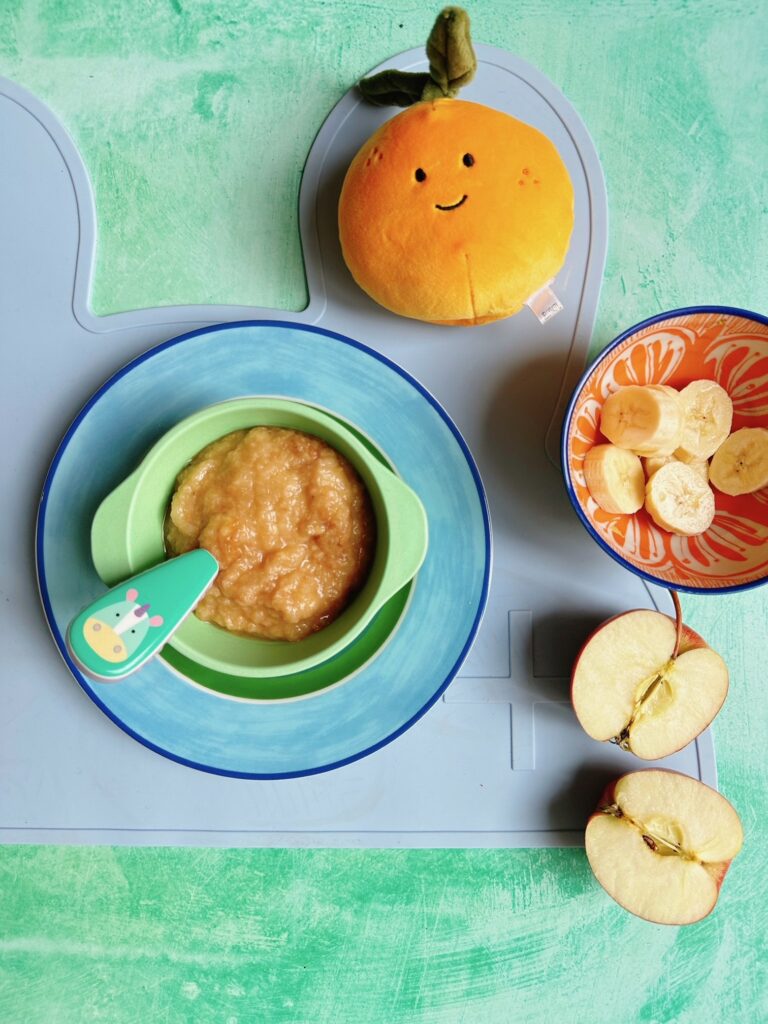
On my Baby & Toddler recipe app, I’ve dedicated an entire section to the best first foods and how to prep them, whether you are pureeing or cutting up.
2. Why is iron so important for my baby and what are the best iron-rich foods?
Iron is essential for your baby’s physical and cognitive growth. But their iron reserves built-up during pregnancy start to deplete at around 6 months, so this is an important time to introduce iron-rich foods.
Good sources of iron that are more easily absorbed by the body are red meat, eggs, fish and darker cuts of chicken. As a guide, aim to offer iron-rich foods twice a day.
Plant-based sources of iron include green leafy veggies, nuts and seeds, beans, lentils and fortified breakfast cereals. But the trick here is to pair these with vitamin C-rich foods as non-meat sources of iron are absorbed less easily than animal sources…think berries, kiwi. tomatoes or broccoli.
On my Baby & Toddler Recipe app, I’ve packed in lots of my favourite iron-rich mealtime ideas, so do check these out
3. My daughter prefers food from jars than my homemade food. She refuses my homemade fruit snacks but will eat it out of a jar.
The challenge with manufactured baby good lies in its high temperature heating process which often results in the loss of essential nutrients to extend its shelf life.
Additionally, the essential protein content in jars tends to be relatively low.
With homemade baby food, you have full control over the ingredients, and you can pack-in plenty of nutrition. It can take up to 15 attempts for your baby too accept new tastes, so perseverance is key!
Here are a few tips:
- Gradual Transition: Try incorporating small amounts of homemade food alongside the jarred food. Gradually increase the proportion of homemade food until your baby accepts the homemade food on its own.
- Consistency: Mimic the consistency of your homemade purees with that of the jarred food. Then you can gradually increase the texture.
- Invest in fillable pouches: You can buy reusable baby food pouches and fill them with homemade food if your baby enjoys feeding herself from a pouch.
- Eat together: Babies love to play copycat, and the chances are, if you are eating something interesting, they will want to explore it too.
- Fruit Snacks: Try cutting-up a variety of fruits and pop them into an ice cube tray or small silicone muffin tray. Now leave the picking and choosing to them. and let your child choose the fruits he wants to eat.
4. My baby 6 months, eats only a few bites and then wants the bottle again
This is common as babies have tiny stomachs at six months. The key is to pack those small mouthfuls with good nutrition. Here are some ideas to try:
- Offer solid foods when your baby is alert and not too hungry or too full. Avoid feeding your baby immediately after bottle feeding and you may need to give your baby a little milk to take edge off her hunger.
- Offer small amounts of a new food and increase the quantity gradually.
- Offer your baby plenty of soft finger foods (cut into batons) so they can take charge. Play is ok!
- Choose a soft tipped and shallow spoon, making it easy for your baby get the food off the spoon. If offering purees, aim for a consistency that is smooth but thick enough to hold on the spoon.
- Introduce more than one new food per meal to increase exposure to, and acceptance of, a variety of foods.
- Alternate foods from one day to the next, so that they don’t get used to eating particular foods.
- Explore different ways to cook one food. For example, you can steam, roast or fry cauliflower. The texture, taste, colour, and size of each is different.
- Most importantly, read your baby’s cues. Simply try again later.
5. How can I raise my child healthy and vegetarian?
If raising your baby on a vegetarian diet, it is important to include nutrient dense foods like cheese, eggs, nut butters, and full fat dairy products as these will provide the extra nutrients required for healthy growth and development. Babies need proportionately more fat in their diet than adults.
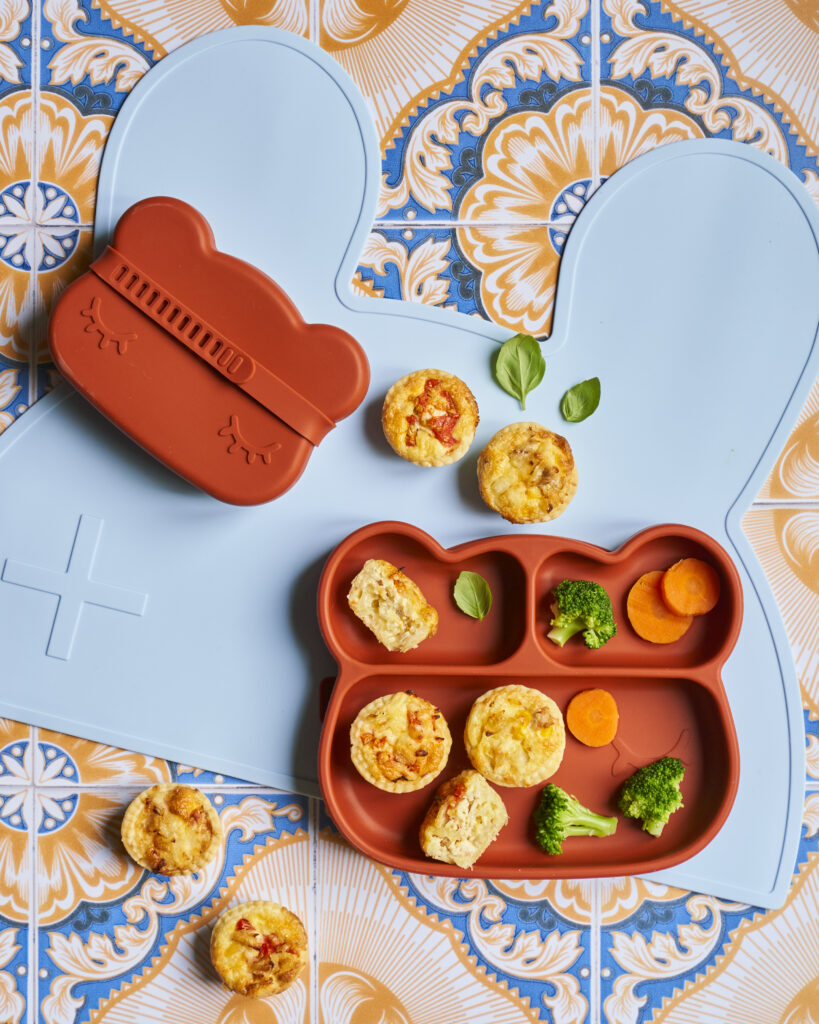
You can use cow’s milk or a plant based equivalent from six months in cereals or in cooking but continue with breast or formula milk for your baby’s main milk.
Eggs are one of nature’s superfoods, so offer things like scrambled eggs, mini frittata muffins or dippy eggs with toast fingers.
Foods like quinoa and buckwheat are complete proteins meaning they contain all nine essential amino acids – ideal for growing babies. Lentils and pulses also provide protein, but only offer in small amounts and balance out with more nutrient dense foods like eggs and cheese.
When it comes to iron, non-meat sources are not so well absorbed, so pair with vitamin C rich foods to help aid iron absorption.
Omega 3 essential fatty acids are also a critical nutrient for your baby’s health and development. Foods containing essential fatty acids for vegetarian babies include; eggs, some margarine spreads, walnuts, soya beans, ground flax seeds and flax seed / linseed oil, rapeseed oil, ground chia seeds and tofu.
6. When is it okay to give a sandwich with spread? And which spreads are best to begin with?
When it comes to sandwich spreads choose options that are nutritious. Here are some suggestions:
Mashed avocado is soft, creamy and rich in monounsaturated fats. The almighty avocado is one of the most nutrient dense foods around.
Choose smooth nut butters like peanut or almond butter. It is important to introduce peanut butter at six months as this can help prevent your baby developing an allergy to peanuts. Spread a thin layer onto the bread or a layer of peanut butter and mashed or sliced banana.
Ripe mashed banana is naturally sweet and good for your baby’s digestion.
Cream cheese on its own is good or make combinations like cream cheese, avocado and chopped fresh tomatoes or grated Cheddar.
7. I don’t know how to starts introducing allergens
The most common food allergies in babies are cow’s milk, eggs, and nuts. Specific food allergies don’t tend to be inherited but if your child suffers from quite severe eczema they are more likely to develop a food allergy if there is a family history of atopic disease like asthma or hay fever.
- When: current advice is to introduce foods like peanut butter, eggs and cow’s milk from 6 months. If you are concerned contact your doctor or paediatric allergy specialist.
- Introduce in the morning if possible so that you can monitor if your child has a reaction, and one at a time with a gap of 48 hours between each new potential allergen to make it easier to identify any food that causes a reaction.
- Repetition: it is important to give these potentially allergenic foods fairy frequently at least twice a week.
- Continue breastfeeding if you are breastfeeding as breast milk can help protect against allergies.
- Make sure your baby is well and avoid introducing potentially allergenic foods if your baby is sick or over tired.
The Allergy Tracker tool on my Baby & Toddler Recipe App will help you track and record any symptoms arising from eating certain foods. Having this information in one place will be invaluable when sharing any concerns with your GP or doctor.
8. Advice on getting over the fear of choking and gagging.
Understandably many parents are anxious about their baby choking. However, it’s important to understand the difference between gagging and choking.
Choking is when your baby’s airwaves become blocked. They will be unable to cry, cough, make any noise or breathe and they’ll need immediate help.
Gagging is completely normal. This is simply your baby learning how to use their tongue to move food from the front of their mouth to the back so they can swallow it. Getting the hang of this can lead to gagging.
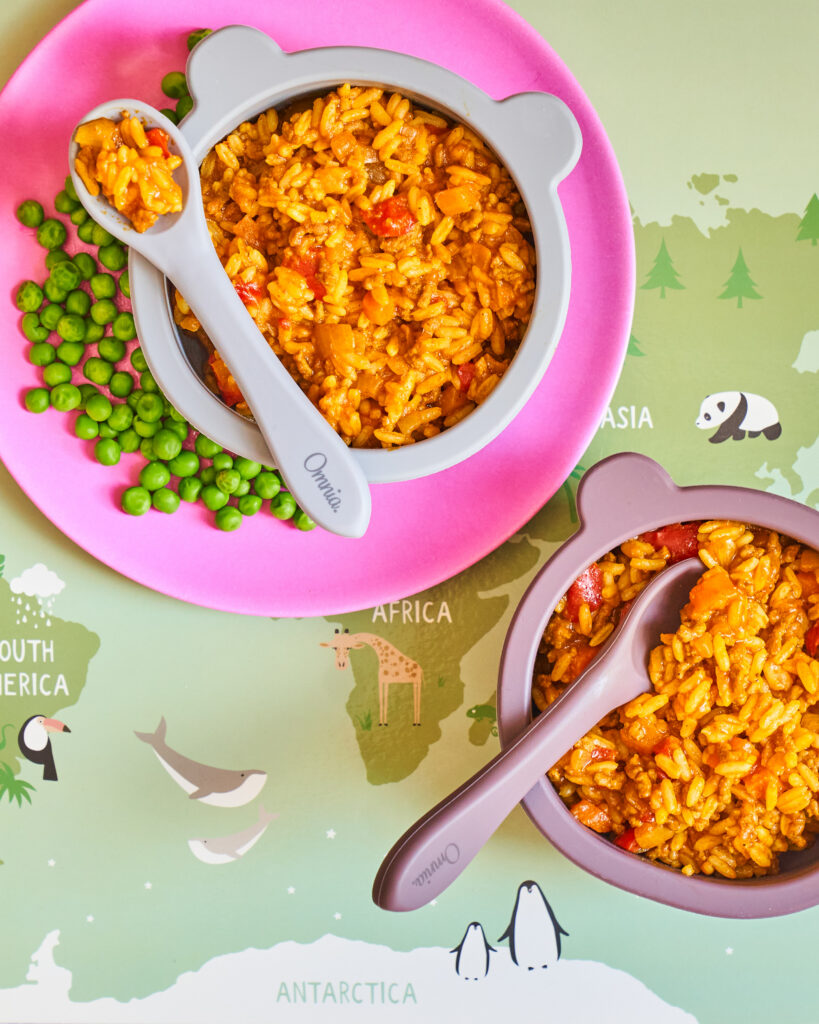
What can you do to prevent choking?
- NEVER leave your baby alone whilst eating, not even for a second, and they must always be supported in an upright position.
- Become familiar with first aid procedures. Check out the Red Cross or NHS websites which have step-by-step training videos or there will likely be first aid courses near where you live.
- NEVER give whole pieces of small solid foods, or raw fruit or vegetables that could easily lodge in and obstruct the throat. Foods such as grapes, large blueberries and cherry tomatoes should be safely cut up. Avoid fruit with stones, whole or chopped nuts and check fish thoroughly for bones first.
- Babies do have a tendency to store food in their mouth, so just have a quick check before you take them out of the highchair!
On my Baby & Toddler Recipe app, I have dedicated an entire section to preparing 50+ vegetables and fruits safely. I want every parent to feel confident about introducing solids, so this step-by-step guide is worth having up your sleeve!
9. Which book would you recommend for starting to wean or does the app have all the info?
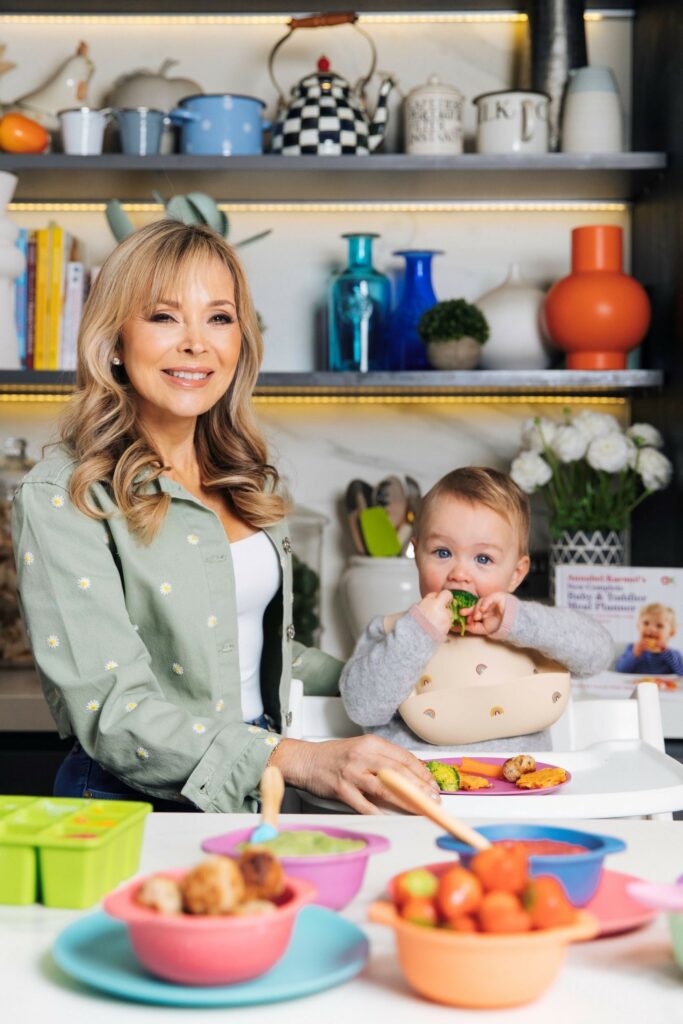
If you are looking for the latest one-stop-shop for all things weaning, my Baby & Toddler Recipe App will quickly become your daily resource for recipes, practical support and advice.
As well as 1,000+ simple and nutritious recipes, with new ideas every week, my app provides expert weaning support, including my #1 listen-along guide.
It is super popular, and a kitchen essential for exploring a world of good food. Better still, you can try it for free.
10. My toddler eats only pasta or fruit. Any tips for picky eaters?
When you’ve got a fussy toddler, it’s easy to get locked in a battle of wills and give in to just a limited range of foods. So here are my Top tips to tempt your fussy eater to try something new.
- Limit snacking on foods that are not nutritious instead keep a supply of healthy snacks on a low shelf in the fridge.
- Toddlers eat with their eyes as well as their tummies so make the food attractive. Cut into shapes or make individual portions in ramekins.
- Make your own healthy fast food like homemade chicken nuggets or burgers using good quality protein and you can sneak in some veggies.
- Get your fussy toddler involved in cooking! It’s amazing how being involved in the preparation of a meal can stimulate a child’s appetite. Take a look at ‘My First Cookbook’ for toddlers.
- Keep mealtimes stress free and positive and eat together with your child.
- Have a rewards chart in the kitchen and give your child a sticker every time he tries a new food. When they have collected a line of sticker, reward them with a prize.
- Eat together with your child or invite over a friend who has a child who is a good eater – toddlers are more likely to eat something if they see another child enjoying it.
- Sneak in some veggies! You can make a Bolognese or tomato sauce and blend in lots of veggies. What they can’t see they can’t pick out!
- Easier said than done but try and hide your own frustrations. Instead give lots of praise when they try something new.
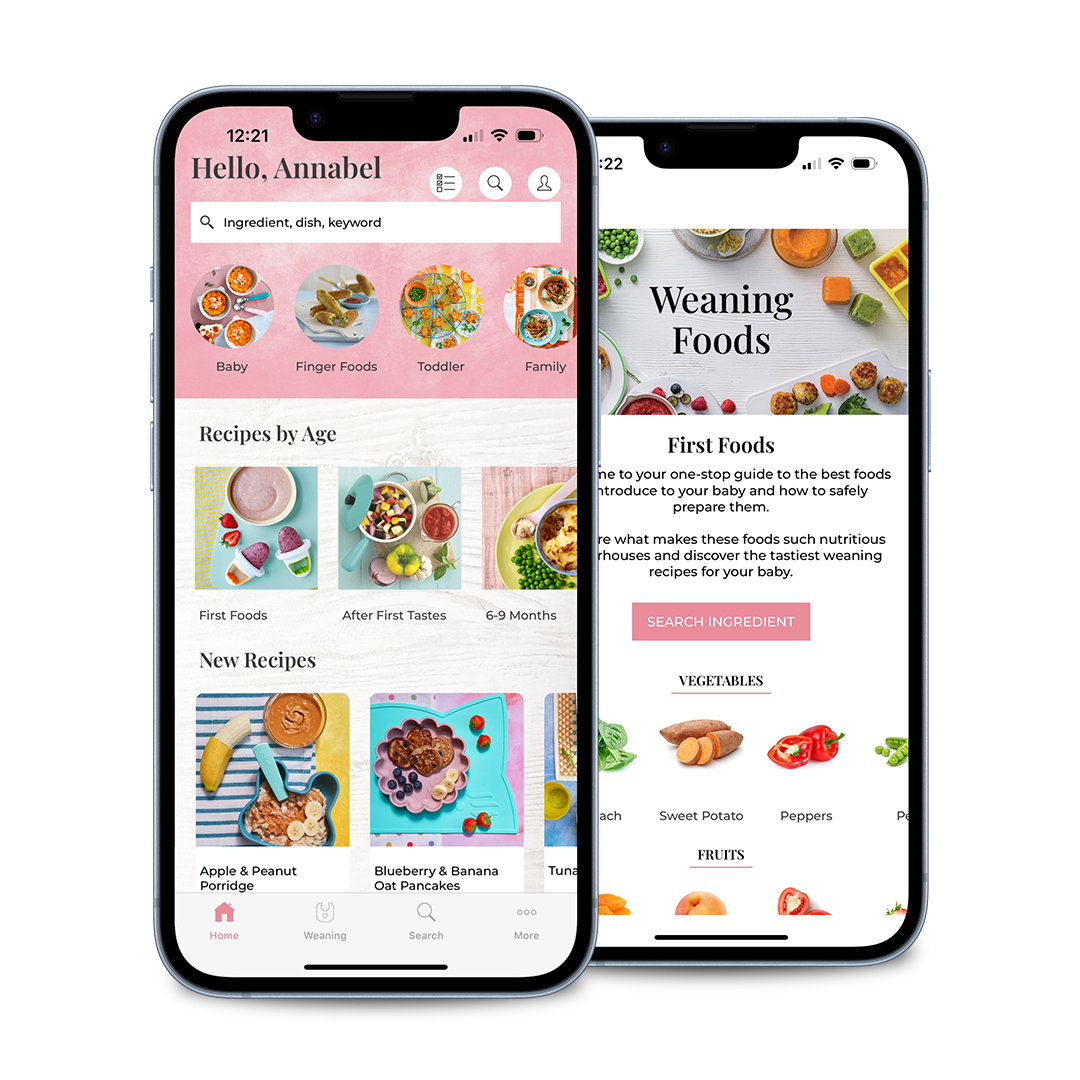
Looking for mealtime inspiration for your baby or toddler? Annabel’s award-winning recipe app is packed with over 1,000 simple and delicious ideas for the whole family, PLUS new recipes every week.
Packed with expert weaning support, including Annabel’s #1 listen-along guide, it’s a kitchen essential for happy, healthy mealtimes. Visit the App Store or Google Play and start your FREE trial today!
Did this article help you?
Share this article
Receive a notification at the start of a leap!
Would you like to be prepared when your baby is about to enter a leap? Sign up for our leap alarm for free and always receive a notification when a leap is about to start!




